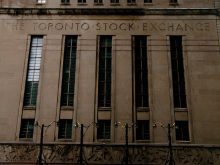Where are we in the current economic cycle? Canada experienced a minor commodity-driven recession in 2015. It was a major recession in oil-producing regions but unfelt in other parts of the country. The United States has not experienced negative growth since 2009. My focus with this article is the United States because well, it’s the big kahuna.
Much has been said about the length of the current cycle, now in its 11th year and the longest growth period on record. Little has been said about the strength of the cycle. There have been seven expansionary periods since the Second World War. While the current is the longest, it is only the fifth-largest. The current growth period has expanded U.S. GDP by about 25 per cent, eclipsing two, but behind five other expansion phases. The largest expansion was 1961 to 1969 at over twice the GDP growth of the current expansion.
Read Also

Gentle treatments for pain in the neck
Heading toward year-end, people unknowingly tense up against the cold and busyness, causing neck pain that can often be treated with appropriate support and gentle mobility, athletic therapist Kathlyn Hossack says.
In the fall of 2018, when most economists were calling for a recession in 2019 or 2020, I remained positive — partly because we had not yet experienced a commodity price rally anywhere close to previous rallies. These recession concerns led to a 20 per cent decline in the S&P 500. As recession fears dissipated during 2019, stocks rose significantly.
The late-cycle commodity bull will generally take prices close to prior levels. Yet in 2018 the three key commodities remained at about half of previous highs. I do not expect the current cycle to end with the same commodity craziness as in 2008. I am positive on Canada partly because the historical late-cycle commodity bull hasn’t occurred.
Let’s look at commodity stocks relative to the economic cycle. I’ve discussed oil stocks in past articles, so let’s turn our attention to other commodities. I looked at the share price history of a basket of the largest commodity companies. These included miners BHP Billiton (BHP), Rio Tinto (RIO), Vale (VALE) and Teck Resources (TECK.B). I included two large fertilizer companies, Mosaic (MOS) and Nutrien (NTR); two large grain handlers Bunge (BG) and Archer Daniels Midland (ADM); and the largest uranium producer Cameco (CCO).
In 2005, the average share price of these nine companies was $24. At the peak in 2008 they had quadrupled to almost $100. However, one year later, in 2009, they averaged $25, almost the same as when the bull started to sprint.
The Great Recession only interrupted the commodity bull. By 2011 they once again peaked at $73. Today they are half that, at $36. That was the price fluctuation of the average of nine of the largest and most stable commodity companies. Small producers fluctuated more dramatically. The oil bull, by contrast, lasted until 2014. While a recession did not ensue, there was a marked economic slowdown.
Commodity stocks are more volatile than the market, but generally peak after the main market indices have peaked. This explains why the U.S. market high occurred in 2007 whereas the Canadian market was eight months later. They can diversify a portfolio but will not protect it from the ravages of recession. My main M.O. (modus operandi) of buying value and rarely selling isn’t the best strategy here. Buying low and selling high is better if it can be accomplished.
Because I only put my mouth where my money is, I own shares or have sold puts on all the companies mentioned except Vale and Bunge. I have been gingerly adding. The past cycle was more dramatic than others but followed a similar pattern. I expect that pattern to repeat.
I wrote this article while the coronavirus crisis was unfolding. Oil and copper nosedived while agricultural commodities declined to a lesser extent. The longer-term impact remains to be seen, but my feeling is the crisis will only have a short- to medium-term impact. There are always regular interruptions to the general trend.
















